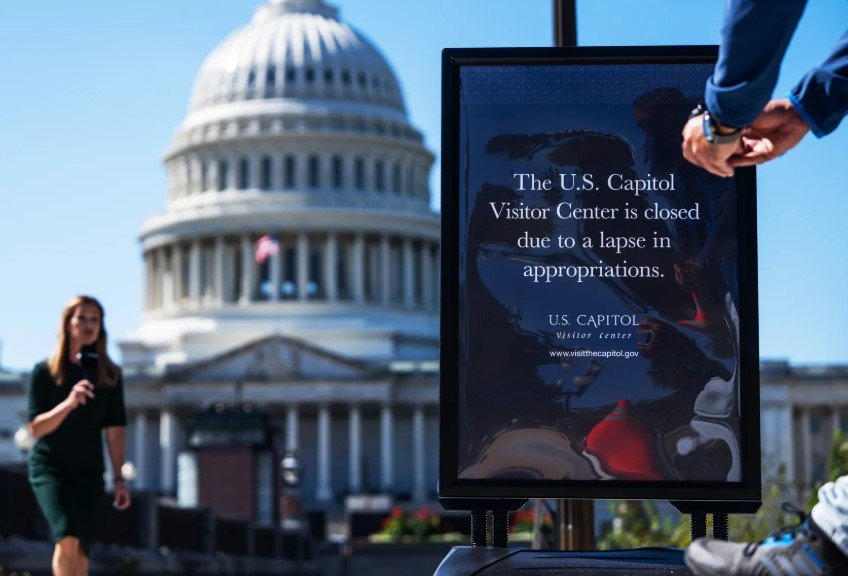Millions of Americans who depend on SNAP food assistance face a big problem. The ongoing government shutdown could stop their benefits from loading on cards starting November 1, 2025, leaving families without key support for groceries.
The shutdown started on October 1, 2025, and has now lasted over three weeks. Federal funding for the Supplemental Nutrition Assistance Program, or SNAP, runs out monthly, and states say they lack money to issue full benefits next month without a deal in Washington.
This affects about 42 million people nationwide. Many low-income families, including children and seniors, rely on these funds to buy food. Officials warn that without action, November payments may pause in several states.
What SNAP Does for Families
SNAP helps people afford healthy food through electronic cards that work like debit cards at stores. Each month, the program adds money based on household size and income.
It started in the 1960s to fight hunger and now serves a wide range of groups. For example, working families, the elderly, and those with disabilities get support.

In 2025, the average benefit is around 291 dollars per person per month. This amount adjusts for rising food costs, but the shutdown threatens to cut it off.
Without SNAP, many say they struggle to eat balanced meals. Studies show the program reduces food insecurity by up to 30 percent in tough times.
How the Shutdown Hits Funding
The government shutdown means no new federal budget, so agencies like the Department of Agriculture cannot send funds to states. October benefits went out because money was set aside before the lapse.
But for November, the story changes. A letter from agriculture officials on October 10 warned of shortfalls if the shutdown drags on.
States must manage their own programs, but they depend on federal dollars. Without them, they cannot load cards with fresh benefits.
This is the longest shutdown in recent years, beating past records. It stems from disputes over spending and policy in Congress.
Experts predict chaos if benefits stop. Food prices have risen 5 percent this year, making it harder for families to cope without aid.
States Warn of Benefit Pauses
Many states have sent alerts to SNAP users about possible delays or halts in November. They urge people to plan ahead and use any saved benefits wisely.
For instance, some recommend buying canned goods or frozen items that last longer. This advice aims to stretch current funds through the month.
Here is a list of actions states suggest:
- Check your card balance right away.
- Buy non-perishable foods like rice, beans, and pasta.
- Look for local food pantries or community programs.
- Contact state offices for updates on the shutdown.
At least 25 states, from California to New York, plan to pause benefits if no funding comes. This includes places like Texas, Ohio, and Tennessee.
In Missouri, officials said the pause starts November 1 unless Congress acts. Similar messages appear in Nevada and New Jersey.
Impact on Communities and Economy
The loss of SNAP benefits could hurt more than just families. Stores that accept these cards might see less business, affecting local economies.
Food banks report a surge in calls from worried people. Leaders say they cannot replace the program’s scale, which provides billions in aid each year.
One food bank executive estimated a gap of millions of meals in her state alone. Nationwide, the deficit could reach hundreds of millions.
| State | Estimated SNAP Recipients | Potential Meals Lost in November |
|---|---|---|
| California | 5.5 million | Up to 150 million |
| Texas | 3.5 million | Around 100 million |
| New York | 2.8 million | About 80 million |
| Florida | 3.2 million | Roughly 90 million |
| Ohio | 1.5 million | Nearly 45 million |
This table shows rough estimates based on current data. Actual numbers vary by state reports.
Communities with high poverty rates feel the pinch most. Rural areas and big cities alike report rising concern.
Alternatives During the Crisis
People facing a benefit lapse can turn to other resources. Food banks and pantries offer emergency supplies, though stocks may run low.
Some churches and nonprofits run meal programs. Schools often provide free lunches for kids, which continue despite the shutdown.
Charity groups suggest applying for other aid like WIC for pregnant women and young children. This program has separate funding and should keep going.
Experts advise budgeting carefully. Shop sales, use coupons, and cook at home to make money last.
States encourage calling hotlines for help. Many have set up special lines for SNAP questions during the shutdown.
What Happens Next for SNAP
Congress needs to pass a budget to end the shutdown and restore funding. Talks continue, but no deal is set as of October 24, 2025.
If resolved soon, benefits might load on time. But delays could mean back payments later, though states warn of no guarantees.
Advocates push for quick action to avoid hunger spikes. Past shutdowns ended without SNAP lapses, but this one tests the system.
Readers, share this article to spread awareness about the SNAP crisis. Comment below on how the shutdown affects you or your community, and let’s discuss ways to help those in need.








